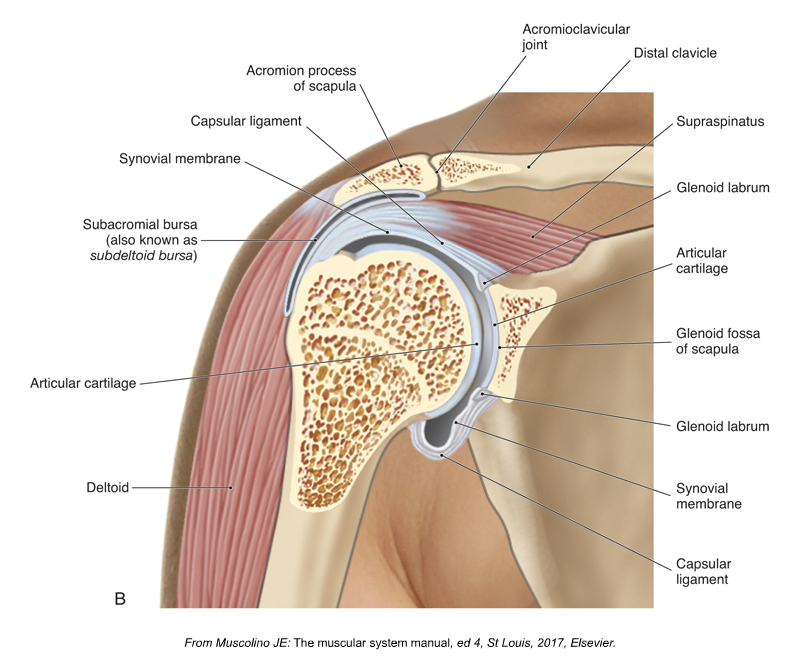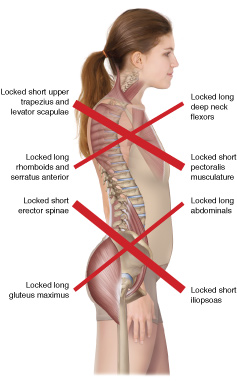For most of our clients who present with the postural distortion pattern known as upper crossed syndrome, it is important, perhaps absolutely necessary, to include thoracic spinal joint mobilization technique into extension as part of the treatment plan to address the thoracic hyperkyphosis.
Six Causes of Shoulder Impingement Syndrome – Part 1
Shoulder impingement syndrome is a condition in which the distal tendon of the supraspinatus and the subacromial bursa become impinged between the head of the humerus and the acromion process of the scapula. Following are the six major causes of shoulder impingement syndrome.
Locked Short Muscles – Locked Long Muscles
Two opposing muscle groups, the “facilitated” muscles that are locked short and the “inhibited” muscles that are locked long.



